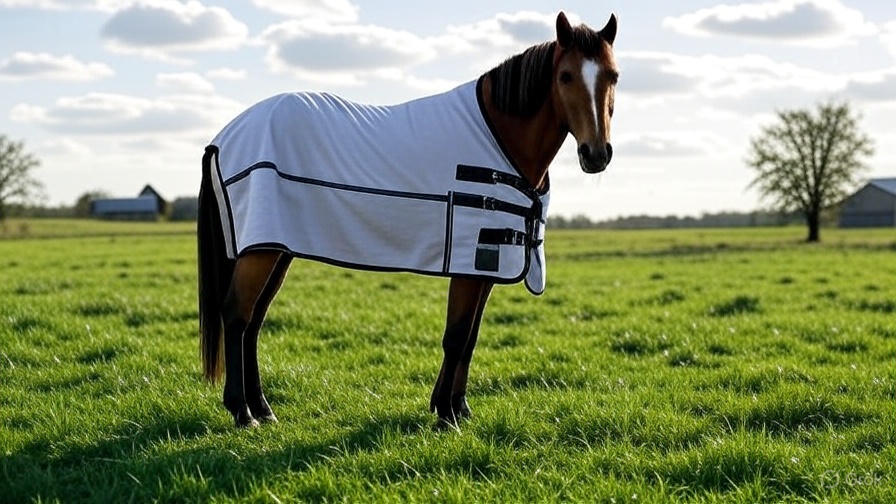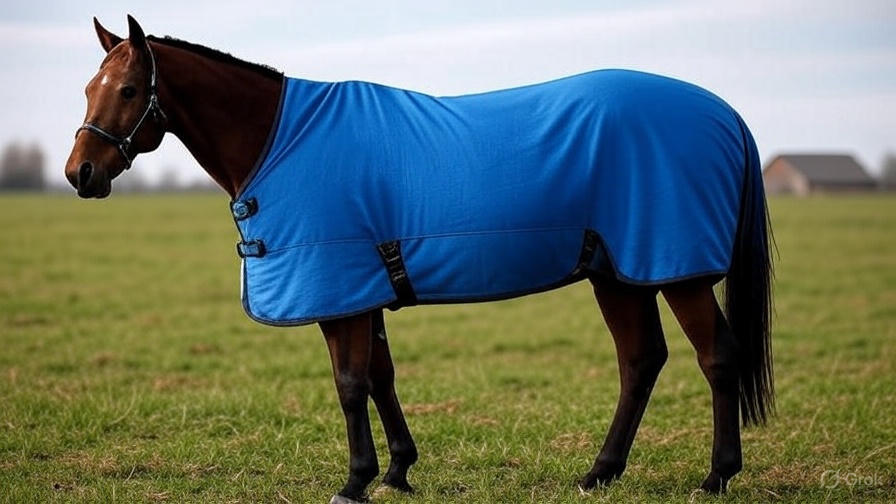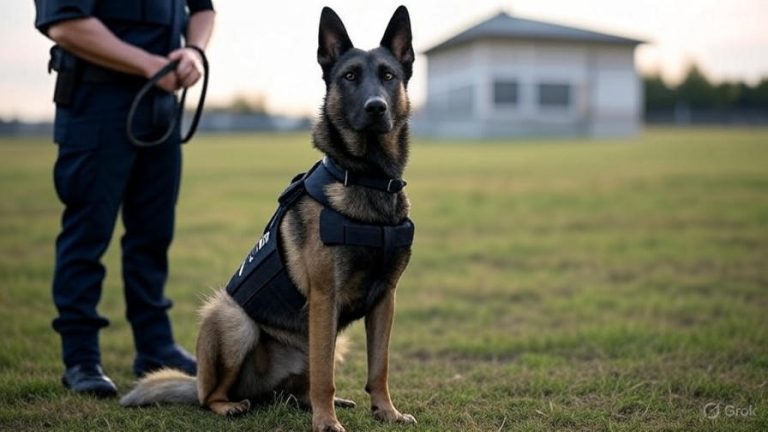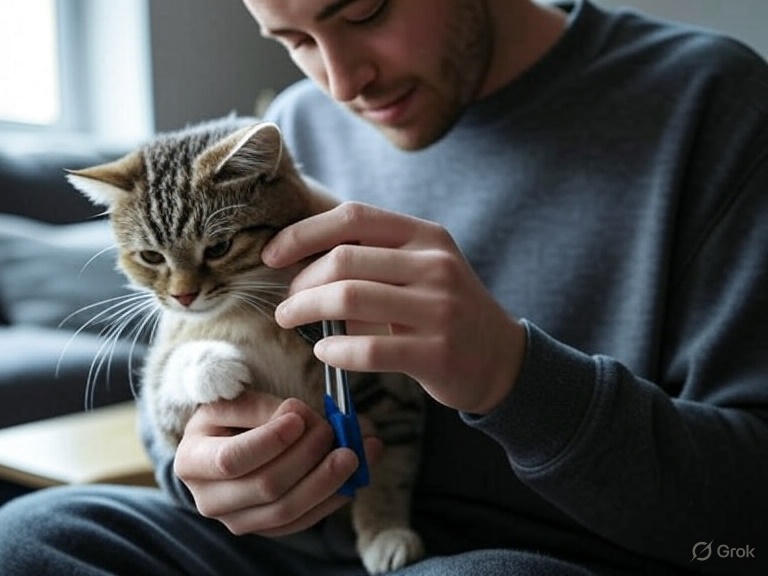How to Measure for a Horse Turnout Blanket?
Getting the right fit for your horse’s turnout blanket makes all the difference between comfort and disaster. A properly fitted blanket keeps your horse warm, dry, and happy during harsh weather conditions. On the other hand, an ill-fitting blanket can cause rubs, pressure sores, and even injuries that could sideline your horse for weeks.
Many horse owners struggle with blanket sizing, leading to returns, exchanges, and frustrated horses. The good news? Measuring your horse for a turnout blanket doesn’t require special skills or expensive tools. With the right technique and a simple measuring tape, you can ensure your horse gets a blanket that fits like a glove.
Why Proper Blanket Fit Matters for Your Horse
Before diving into the measuring process, let’s examine why blanket fit plays such a crucial role in your horse’s well-being. A well-fitted turnout blanket protects your horse from wind, rain, and cold temperatures while allowing natural movement and behavior.
Poor-fitting blankets create numerous problems. Too-small blankets restrict movement and can cause painful pressure points across the shoulders, withers, and chest. These pressure points often develop into open sores that take weeks to heal. Blankets that are too large create different issues – they slip, twist, and can tangle around your horse’s legs, creating dangerous situations in the paddock.
The weight and style of turnout blankets also affect how they should fit. Lightweight summer sheets require different measurements than heavy winter blankets with thick fill. High-neck blankets need additional considerations for proper neck coverage without restricting head movement.
Essential Tools for Measuring Your Horse
Gathering the right measuring tools before you start ensures accurate measurements every time. You’ll need a flexible measuring tape – the kind used for sewing works perfectly. Avoid rigid metal measuring tapes as they won’t follow your horse’s body contours properly.
Have a helper available when possible. One person can hold the horse steady while the other takes measurements. This approach produces more accurate results and keeps everyone safer during the process.
Keep a notebook and pen handy to record measurements immediately. Writing down numbers prevents confusion and mistakes when ordering your blanket. Many horse owners take multiple measurements on different days to ensure consistency.
Step-by-Step Horse Blanket Measuring Process
Start with your horse standing square on level ground. An uneven surface can throw off your measurements by several inches. Make sure your horse stands calmly – anxious or fidgety horses make accurate measuring nearly impossible.
Position yourself on your horse’s left side, as this is the traditional side for handling horses. Begin by locating the center of your horse’s chest. This point sits at the base of the neck where it meets the chest, right in the front center of the horse’s body.
Place one end of your measuring tape at this center chest point. Hold it firmly but don’t press into the horse’s body – the tape should rest gently against the skin or light clothing. Walk the measuring tape along your horse’s side, following the natural curve of the body.
Continue measuring along the barrel toward the hindquarters. The tape should follow the horse’s side about halfway up the body – not along the belly line and not along the topline. Think of drawing an imaginary line from the center of the chest to the point of the buttock.
The endpoint of your measurement sits at the point of the buttock. This bony prominence is easy to feel on most horses and provides a consistent measuring point. The distance from center chest to point of buttock gives you the blanket size.
Common Measuring Mistakes to Avoid
One frequent error involves measuring too high or too low on the horse’s body. The measuring tape should travel along the side of the horse at roughly the same height as the elbow. Going too high follows the horse’s topline and produces measurements that are too short. Measuring too low along the belly creates measurements that are too long.
Another mistake happens when horse owners pull the measuring tape too tight. The tape should lie against the horse without creating pressure. Tight measurements result in blankets that are too small, while loose tape measurements create blankets that are too large.
Some people try to measure over existing blankets or thick coats. Always measure directly against the horse’s body or over very light clothing only. Heavy winter coats and blankets add inches to your measurements, leading to oversized blanket orders.
Measuring a moving or anxious horse produces inaccurate results. Take time to calm your horse before measuring. If your horse won’t stand still, try measuring during grooming time when the horse is more relaxed and accustomed to being handled.
Different Blanket Styles and Their Fit Requirements
Turnout blankets come in several styles, each with specific fit considerations. Standard neck blankets are the most common type and follow the basic measuring guidelines outlined above. These blankets cover the horse’s body from chest to tail but leave the neck area open.
High-neck blankets extend up the horse’s neck, providing extra warmth and protection. When measuring for high-neck styles, pay attention to the neck opening size. The neck portion should fit snugly without being tight, allowing the horse to lower its head to graze comfortably.
Combo blankets include a detachable neck piece that can be used separately or attached to the main blanket. These versatile options require careful attention to both body and neck measurements. The neck piece should overlap the main blanket slightly to prevent gaps that let in cold air and moisture.
Full-neck blankets have an integrated neck portion that cannot be removed. These blankets provide maximum coverage but require precise fitting to prevent rubbing around the neck and shoulders. The neck opening must be large enough for comfortable head movement but small enough to keep out drafts.
Special Considerations for Different Horse Shapes
Not all horses have the same body type, and blanket fit must account for these differences. Round, barrel-shaped horses often need blankets with deeper drops to cover their wider bellies properly. These horses may also require larger sizes than their measurements suggest to ensure adequate coverage.
Narrow, angular horses present different challenges. Their measurements might suggest a certain size, but the blanket may be too wide across the chest and shoulders. Some manufacturers offer blankets in different cuts to accommodate various body types.
Pregnant mares need special attention when measuring for blankets. Their changing body shape means blankets that fit early in pregnancy may be too small later on. Consider sizing up for pregnant mares or invest in adjustable blankets with belly surcingles that can expand as needed.
Young, growing horses also require thoughtful blanket sizing. A blanket that fits perfectly in fall may be too small by spring. Many horse owners size up slightly for young horses to accommodate growth, then use blanket clips or adjustments to improve the fit.

Understanding Blanket Size Charts and Measurements
Most blanket manufacturers use similar sizing systems, but small variations exist between brands. A 78-inch blanket from one company might fit differently than a 78-inch blanket from another manufacturer. Always check the specific brand’s size chart before ordering.
Blanket sizes typically increase in 3-inch increments: 69″, 72″, 75″, 78″, 81″, and so on. If your horse’s measurement falls between sizes, consider the horse’s body type and the blanket’s intended use. Active horses that move around a lot often benefit from slightly larger sizes for comfort.
Some European blanket manufacturers use different sizing systems. These blankets might use measurements in centimeters or have different size increments. When shopping for imported blankets, double-check the sizing system being used.
Keep in mind that blanket sizes refer to the blanket’s length, not the horse’s height. A 16-hand horse might wear anything from a 72-inch to an 84-inch blanket depending on their body length and shape.
Seasonal Considerations for Blanket Fit
Summer turnout sheets fit differently than heavy winter blankets. Lightweight sheets should fit more closely to the body to prevent them from catching on fences, gates, or other horses. These sheets also tend to move around more than heavier blankets, so a snug fit helps keep them in position.
Winter blankets with heavy fill need slightly more room to accommodate the extra bulk without restricting movement. The additional space also allows for better air circulation, which helps with temperature regulation. Heavy blankets that fit too tightly can actually make horses colder by compressing the insulating fill.
Rain sheets and waterproof turnouts should fit well enough to keep water out but loose enough to allow for the horse’s natural movement. Water can accumulate in poorly fitted rain sheets, making them heavy and uncomfortable.
Medium-weight blankets for spring and fall weather offer the most flexibility in fit. These blankets work well with a standard fit that’s neither too tight nor too loose.
Adjusting for Proper Blanket Fit
Even with perfect measurements, blankets sometimes need adjustments for optimal fit. Most turnout blankets come with several adjustment options to fine-tune the fit. Chest straps, belly surcingles, and leg straps all play roles in keeping the blanket properly positioned.
Chest straps should be snug enough to keep the blanket from sliding backward but loose enough to allow for normal neck movement. You should be able to fit a flat hand between the strap and your horse’s chest. Too-tight chest straps restrict the horse’s ability to lower its head and can cause rubbing.
Belly surcingles help keep the blanket stable and prevent it from shifting side to side. These straps should be comfortably snug – you should be able to slide your hand underneath them easily. Cross surcingles, where the straps cross under the belly, provide better stability than straight surcingles.
Leg straps or tail flaps help keep the back of the blanket in place. These should be adjusted to allow normal movement while preventing the blanket from blowing up in windy conditions. Leg straps should never be tight enough to restrict the horse’s movement or cause chafing.
Troubleshooting Common Fit Problems
Even experienced horse owners sometimes encounter blanket fit issues. Blankets that slip forward usually indicate that the chest area is too large or the belly surcingles are too loose. This problem can also occur with blankets that are too short for the horse’s body.
Blankets that slide backward typically mean the blanket is too long or the chest straps are too loose. This issue can also happen when the blanket is too narrow across the chest, causing it to pull backward.
Rubbing problems most commonly occur at the shoulders, withers, and chest. These issues usually indicate that the blanket is too small or poorly adjusted. Sometimes adding a blanket liner or shoulder guard can solve minor rubbing problems without requiring a new blanket.
Twisted blankets that won’t stay straight often indicate an improper fit or inadequate adjustment system. Check that all straps are properly adjusted and that the blanket is the right size for your horse’s body shape.
When to Seek Professional Help
Some horses present unique fitting challenges that require expert assistance. Horses with unusual conformation, past injuries, or specific medical needs may need custom blankets or professional fitting advice. Many tack shops offer fitting services and can help troubleshoot persistent problems.
Veterinarians can provide valuable input for horses with back problems, muscle issues, or other conditions that affect blanket fit. They can recommend specific features or fits that accommodate medical needs while still providing protection from the elements.
Professional trainers and barn managers often have extensive experience with blanket fitting and can offer practical advice based on years of trial and error. Don’t hesitate to ask for help from experienced horse people in your area.
Maintaining Proper Fit Over Time
Horses’ bodies change throughout the year due to factors like exercise, age, and nutrition. A blanket that fits perfectly in summer may be too tight when the horse gains weight on winter hay. Regular fit checks help identify problems before they cause discomfort or injury.
Check blanket fit every few weeks during the season when your horse wears turnout blankets regularly. Look for signs of rubbing, pressure marks, or areas where the blanket seems too tight or loose. Pay special attention to the shoulders, withers, and chest area where problems most commonly develop.
Older horses may experience muscle loss or changes in body shape that affect blanket fit. Young horses continue growing and may need larger sizes as they mature. Pregnant mares require ongoing fit adjustments as their bodies change.
Conclusion
Measuring your horse for a turnout blanket doesn’t have to be complicated or stressful. With the right tools, proper technique, and attention to detail, you can ensure your horse gets a blanket that provides comfort and protection throughout the season.
Remember that perfect measurements are just the starting point. Proper adjustment and regular fit checks help maintain optimal blanket performance over time. When in doubt, don’t hesitate to seek advice from experienced horse people or professionals who can help ensure your horse stays comfortable and protected.
The investment in time spent measuring and fitting pays dividends in your horse’s comfort, health, and happiness. A well-fitted blanket allows your horse to move naturally while staying warm and dry, making those cold, wet days much more bearable for both horse and owner.







